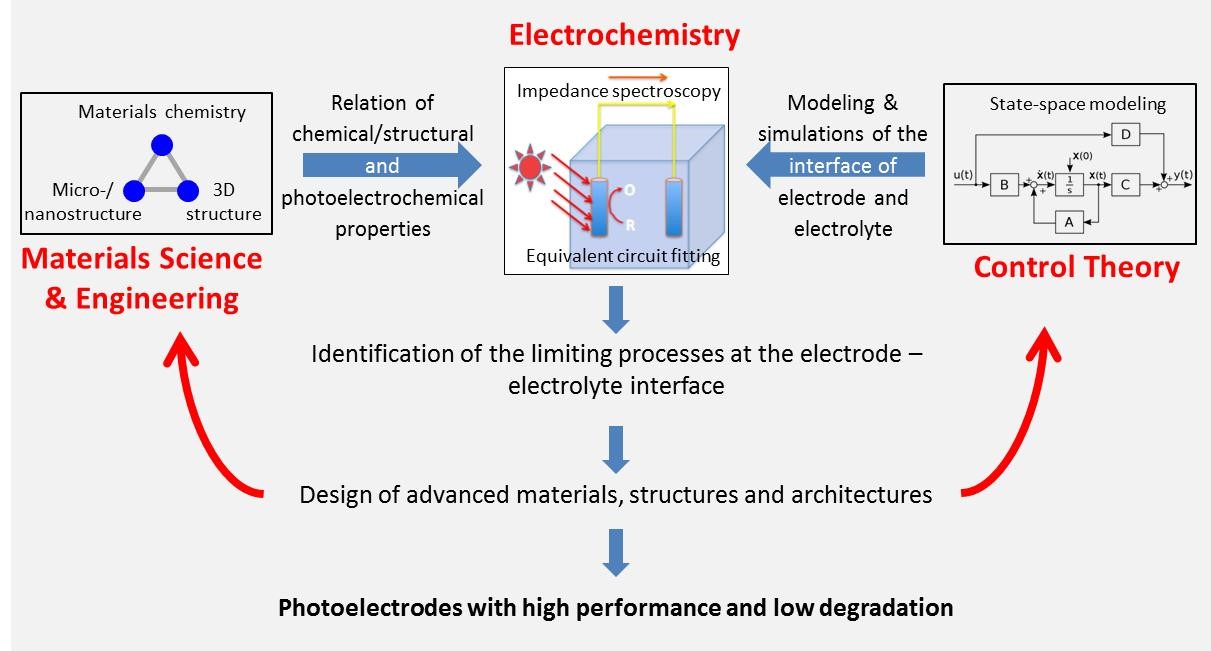Electrochemical materials and interfaces are present in many energy systems, such as fuel cells, batteries, electrochromic windows and water splitting devices. The performance of such devices is strongly related to the materials and interface properties. Therefore, understanding and tuning of these properties are crucial in order to reach highest performance and to supply alternative, sustainable energy solutions for the future.
In the group Electrochemical Materials and Interfaces (EMI) we focus on the fabrication, characterization, and optimization of photo-/electrochemical materials and interfaces. We are combining in a highly multidisciplinary approach experiments with modeling & simulations. This allows us to elucidate the limitations in the materials and at the interface and to design materials and interfaces with improved performance.

Experiments
From the experimental side, we use thin film deposition techniques and micro-fabrication / micro-structuring tools to design and fabricate well-defined model electrodes as well as electrodes with complex and well-defined structures. With different materials chemistries, micro-/nanostructures and 3D structures we manipulate and tailor the materials and interfaces on different length scales. Together with detailed characterization techniques, we can relate chemical, structural and photo-/electrochemical properties and by this identify limitations at the electrochemical interface.
Modeling & Simulations
In parallel to the experimental studies, we focus on modeling & simulations. We are developing a multi-scale modeling & simulation approach in order to simulate photo-/electrochemical data that can be directly compared to experimental, electrochemical measurements. In a first step, we are combining Density Functional Theory simulations with State-Space Modeling & Simulations.